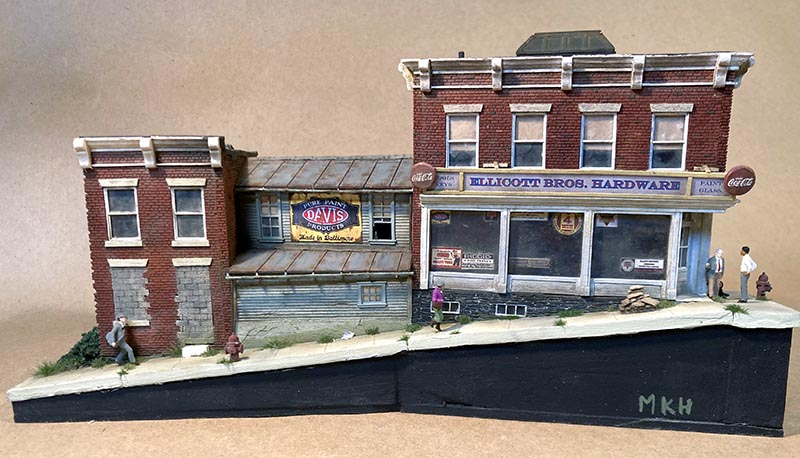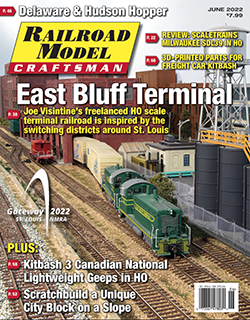 By Matt Hankins/photos by the author
By Matt Hankins/photos by the author
As the scenic Patapsco River drops through rocky gorges to meet the Chesapeake Bay, its namesake city crowds her banks. An unassuming, blue-collar town, the streets of Patapsco Falls buzz with the sounds of post-war bustle. Mothers watch their children play on the sidewalk and in grassy lots as they scrub marble stoops. The Ellicott Brothers Hardware store, built over generations like so many other local businesses, is busy with shoppers looking for home repair supplies. They take a moment to catch up with Mr. Ellicott, who always remembers his customers by name. A Hudson Terraplane, engine straining, climbs the rising grade of the cobbled street. It’s the summer of 1952 and the streets of the city are hot, dirty, and alive.
My fictional city of Patapsco Falls is modeled on the region of Maryland that encompasses Baltimore, Ellicott City and the Patapsco River Valley. The area’s varying landscape makes it ideal for a model railroad. The elevation rises from sea level to about 500 feet in a relatively short distance, providing plenty of opportunity for dramatic grade changes, along with the challenges that come with them. I faced some of these challenges when creating a recent scratchbuild of a Patapsco Falls city street scene. The result was a diorama that was both unique and dynamic.
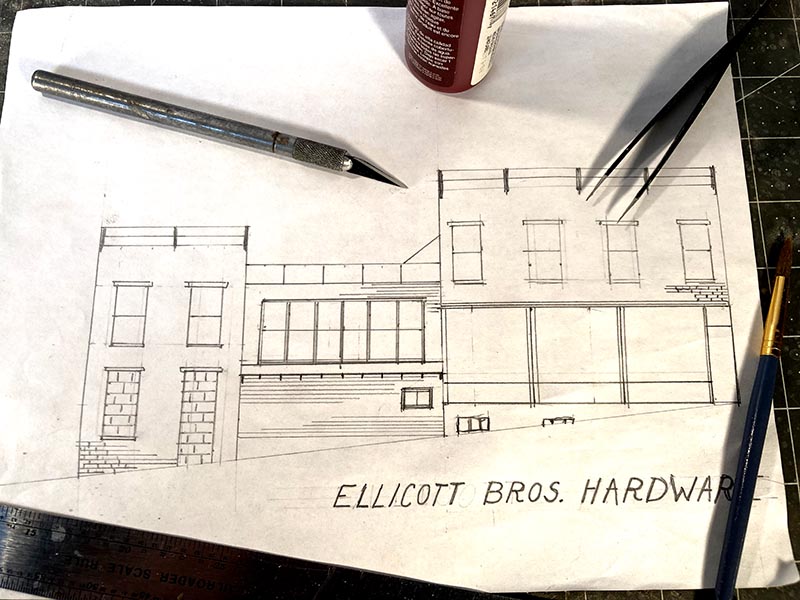
Much of the inspiration for my layout comes from traveling through the region. I am constantly studying the built and natural environments and noting how I might incorporate what I see into my modeling. It is a wonderful way to view the world, as it forces you to notice details that might otherwise go unseen. Even if I don’t recall every nuance of a specific spot when I am designing a scene, I will often revisit or research areas that bear a resemblance to my vision and draw from that inspiration.
For structure modeling, I am specifically drawn to Baltimore City. It has a rich railroad history and a geographic location that provides plenty of material for modeling seaports, urban canyons, and rocky river valleys. It is a place where one can find a rapid stream running feet away from a line of brick rowhouses. This diversity provides plenty of inspiration for a small basement layout.
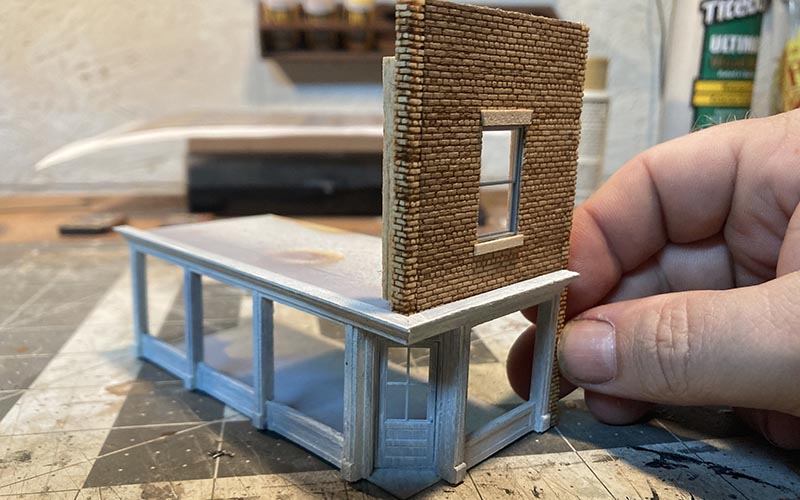
Hardware Store
For the Ellicott Brothers Hardware diorama, I wanted a storefront that dropped downhill, slightly along the street frontage and more dramatically around back. I planned to use various surface materials, shapes and heights to add interest. Above all, I wanted the scene to be recognizable to the region. With these parameters set, I began to sketch it out, laying out the footprint of the diorama based on the available location on the layout.
Next I drew the front and rear elevations. Everything was drawn in HO scale, using the limitations and dimensions of the materials that I wanted to use. Openings were laid out using the actual Tichy Train Group castings, and wall heights were limited by the available Monster Modelworks brick and stone sheets. While I don’t always do a sketch of my scratchbuilds, with one as large and complicated as this one, it was a must.
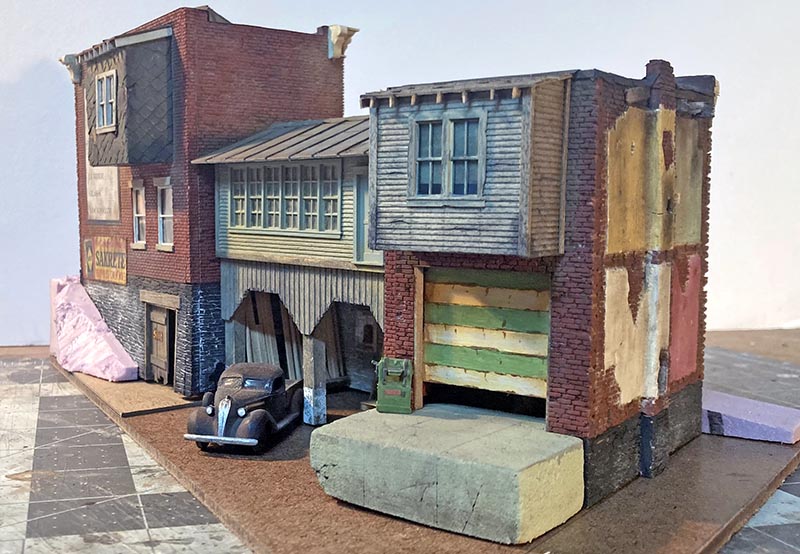
The corner storefront, the focal point of the scene, is located at the highest point of the diorama. A repurposed rowhouse places the model in the Patapsco region and adds a sense of history to the piece. It is set at the lowest elevation and angled to the store for even more interest. The hyphen (more about this later) between the two brick structures is filled with a wooden structure that adds variety in siding material, color and roofline.
The slope on the street side follows a sidewalk, requiring a grade that is realistic and manageable for both pedestrians and vehicles. The rear slope is more severe, creating a space for a detailed loading dock scene. I made sure that my drawing was dimensionally accurate, but I allowed that the sketched details might change as the build progressed. In particular, I was not happy with some of the window choices in the rendering and those changed in my final build…


